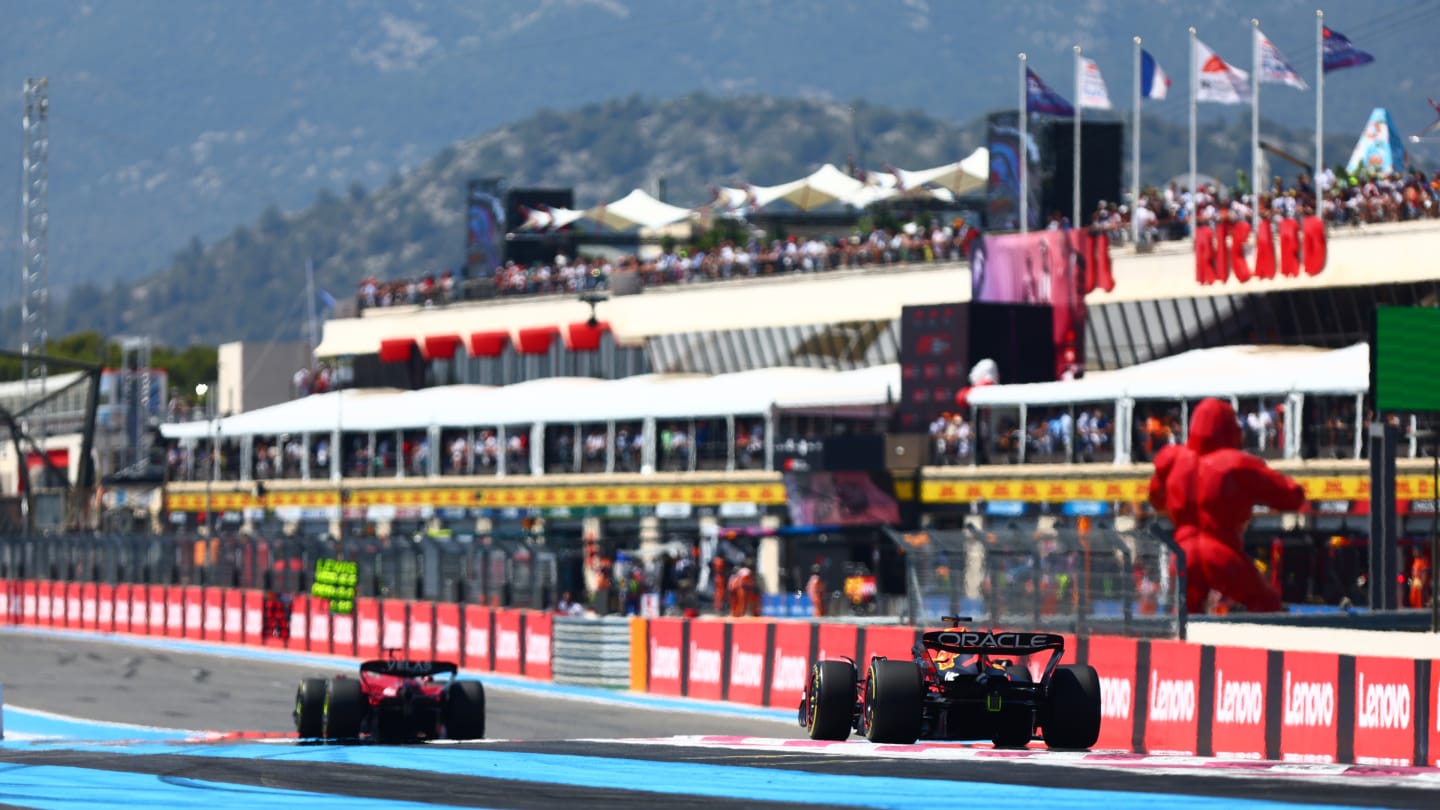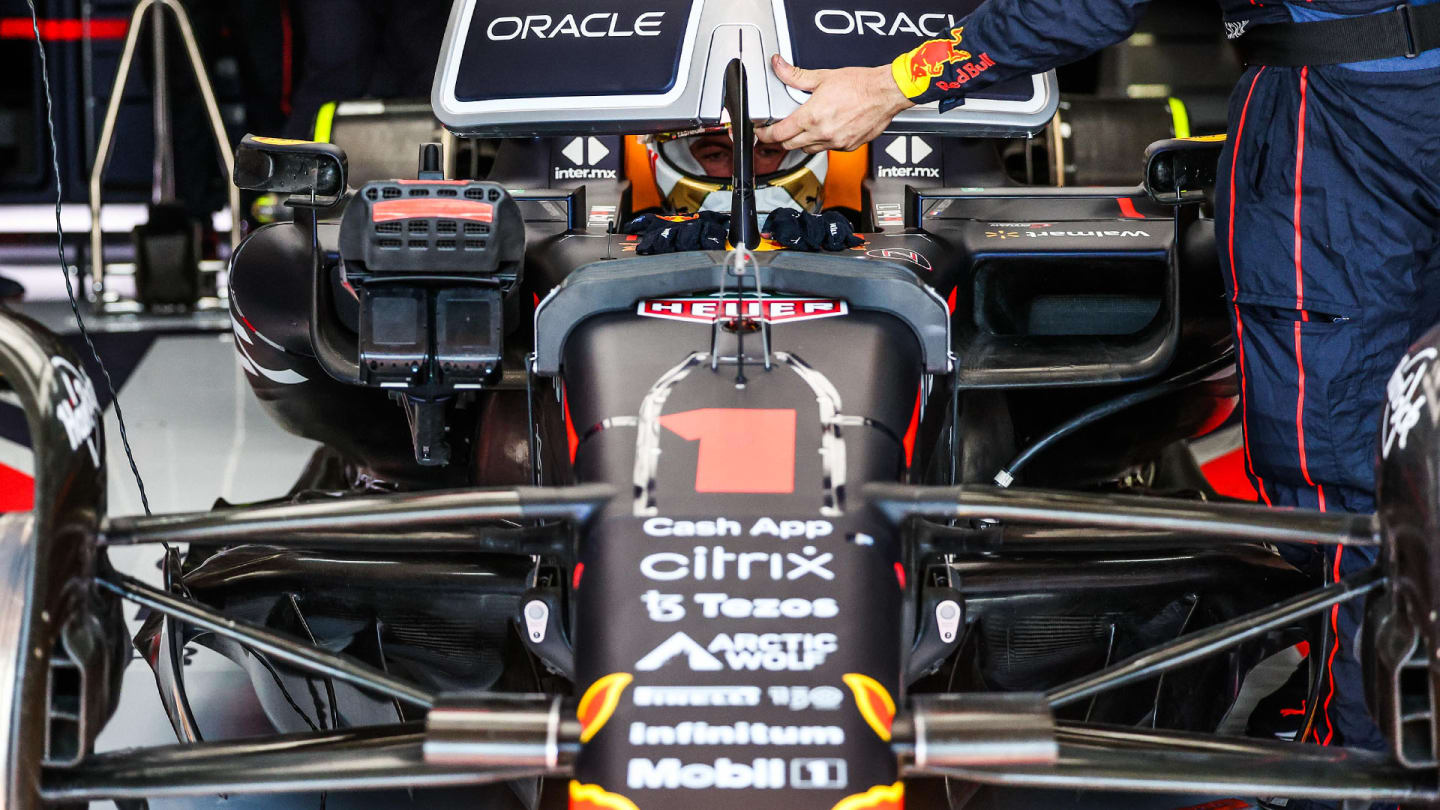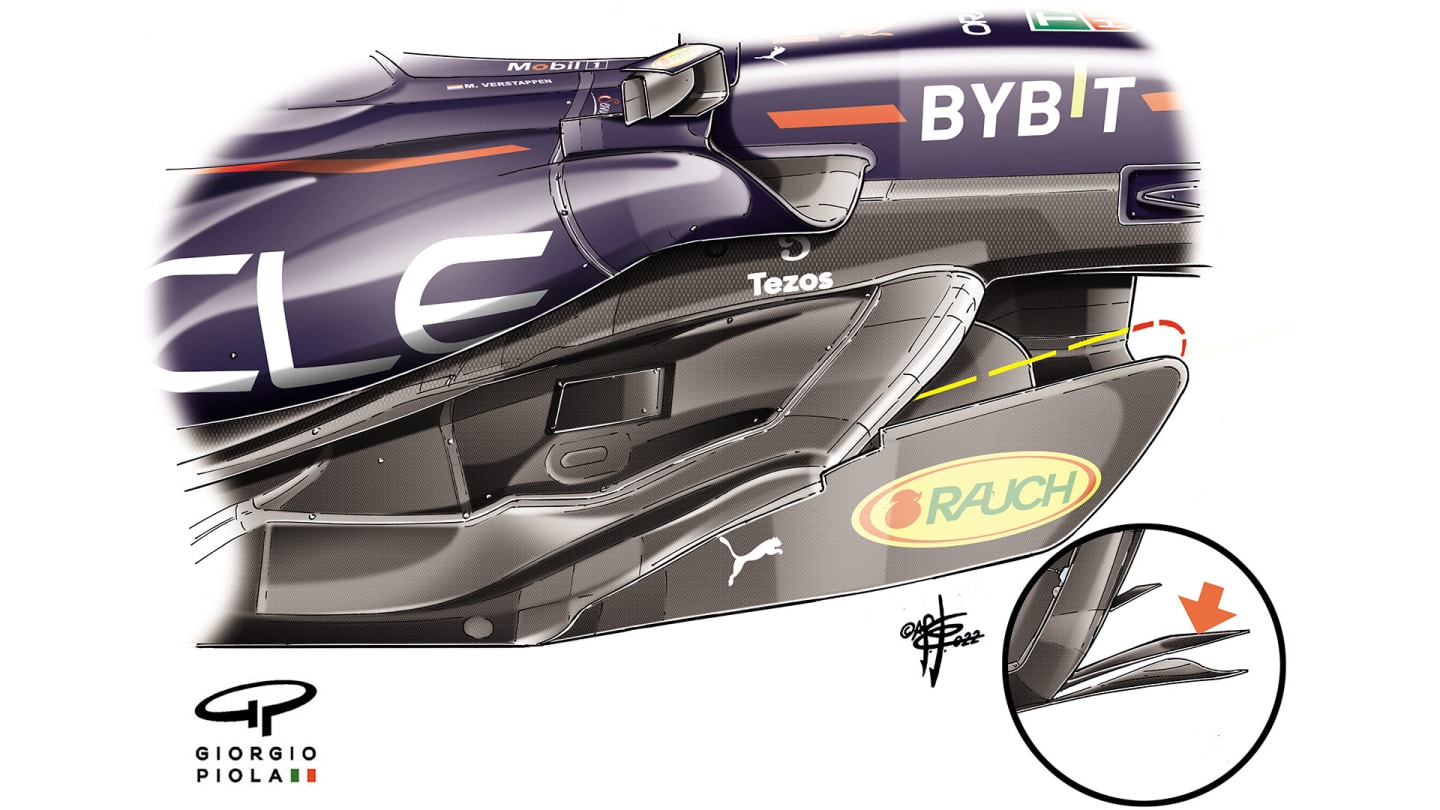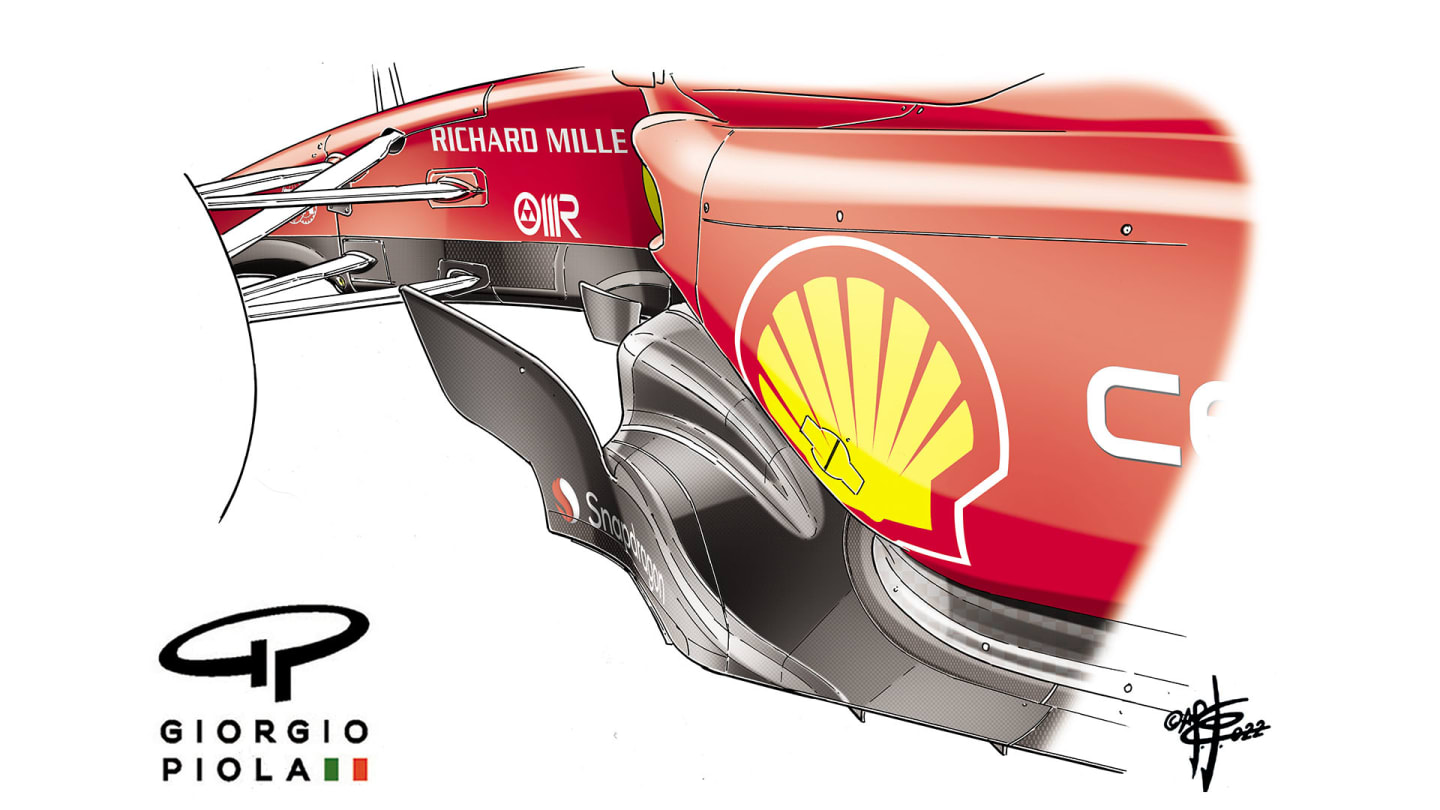
Technical
TECH TUESDAY: Analysing Red Bull and Ferrari’s clever floor inlet arrangements for Paul Ricard

Share

Both Red Bull and Ferrari raced at Paul Ricard with extensively modified floor inlet arrangements as their development race continues apace.
The area of change in both instances is around the inlet fences to the underfloor tunnels. Teams are allowed three fences in addition to the outer ‘barge board’ which effectively forms a fourth fence. Generally their function is to accelerate the air into the venturi tunnels which create the underbody downforce of the car – and the faster that air can be induced to flow, the more downforce will be created.
But there is downforce created by the suction effect of the tunnel (at its peak around the ‘choke point’ where the gap between the tunnel and the ground is at its smallest) and that created locally by the interaction of the air around the exposed upper and lower surfaces of the floor at the front. Aerodynamicists are trading off one against the other in order to vary the aero balance between the front and rear of the car.
READ MORE: Formula 1 on course to deliver 100% sustainable fuels for 2026
The aerodynamic balance is the aerodynamic equivalent of the weight distribution. It concerns what proportion of the total downforce is working on each axle. For a slow-speed circuit it’s generally desirable to have a more forward aero distribution for sharp direction change response than on a higher speed track where fast corner stability is sought.

Red Bull and Ferrari had a tricky decision to take with wing level at Paul Ricard
Around the fast, long corners of the Paul Ricard circuit, it would be desirable to have a generally rearwards-biased centre of pressure.
The simplest way of moving the centre of pressure rearwards is to run a bigger rear wing. However, that is costly in straightline speed. Red Bull in particular prioritised straightline speed and arrived at Ricard with a low-downforce wing.
This made it even more important to have a more rearwards centre of pressure from the underbody in order to compensate. They wanted both strong straightline speed and a more rewards centre of pressure, two contradicting aims which they resolved by a rearrangement of their fences.
RED BULL
Red Bull seem to use the arrangement of their fences at the front of the tunnels to vary the aero distribution from track to track as required. They have run many different arrangements already this year and it would appear that this is a key sophistication to the RB18.

A look at Red Bull’s floor inlet arrangement for Paul Ricard. The team have used a variety of different arrangements in 2022. The outermost vanes were moved further apart on the Red Bull for Ricard, as the team sought to move the aero balance rearwards.
So how do the arrangement of the fences influence the aero balance? There is a clue from Red Bull’s explanation of their new fences to the FIA at Ricard, where they said:
Reason for change: Performance – local load
Difference: Revised fence geometries extending to the floor edge
Description: The fence layout has changed to re-distribute the local pressure distributions to improve load whilst maintaining the flow stability
The ‘local load’ is referencing how much downforce is being created on the front of the floor surfaces as opposed to that created by the tunnel further back. Just like with a wing, a pressure differential between the exposed upper and lower surfaces of the floor can be used to create downforce directly on that area of bodywork. The outer-most fences will be tending to do most of this, whereas the air travelling through the innermost channel is heading directly for the venturi tunnel.
Before France, Red Bull have run their outer two fences extremely close together and converging towards the rear, and the interaction between them probably helped accelerate the air being swept outwards, away from the tunnel. As it does this, it will be creating a pressure differential between the upper and lower surfaces of the floor at that point. This is towards the front of the car and thus will be tending to bring the aero balance forwards. Any airflow used in achieving this is airflow not being fed into the tunnel – therefore enhancing that forward balance further.
For France, those two outer fences were separated much further apart. This implies Red Bull were seeking to move their aero balance rearwards, increasing the proportion of the flow fed to the tunnel and decreasing the load on the forward part of the floor. This would tally with them compensating for the use of a smaller rear wing, which they deemed necessary for good straightline speed.
Moving the centre of pressure rearwards will also minimise the thermal degradation of the front tyres – which was very much an issue for everyone at Ricard, especially with such scorching track temperatures.

Red Bull separated their two outermost fence surfaces for Ricard. The broken yellow line shows where the previous fence ran up very close to the ‘barge board’ (as can be seen also inset). Moving the inner of the two surfaces further inboard, away from the barge board, was part of moving the aero balance rearwards despite a smaller rear wing
FERRARI
The changes Ferrari made to their floor were less circuit-specific than Red Bull’s and part of their general development.
Ferrari increased the height of the tunnel inlet area on the inboard and used a stepped-down section of bodywork to maintain the same height as previously for the outboard section. They also extended the outer ‘barge board’ further forward.
Increasing the height of the inboard inlets will feed a greater volume of flow to the tunnel and although – as with Red Bull’s changes – this would be expected to move the aero balance rearwards, it would also potentially give more total downforce – and this is what Ferrari’s aim seems to be, as confirmed by their own explanation of the car changes to the FIA at Ricard, which read:
This new floor component is part of a standard development cycle. It aims at improving the overall aerodynamic performance through the entire car operating envelope and is not specific to the Paul Ricard circuit layout.

Increased height of inboard tunnel inlets (in carbon black, adjacent to Shell sign) and a stepped-down section of bodywork to the lower outboard inlets
YOU MIGHT ALSO LIKE
Podcast F1 NATION: A first win of the year for Verstappen, but did McLaren miss a trick? It's our Japanese GP review
News Antonelli hails ‘boost of confidence’ in Suzuka after ‘mentally tough’ weekend
News ‘It means a lot’ – Verstappen thrilled with fourth Suzuka win in a row as he reflects on ‘tight’ pit exit moment with Norris

Video RACE START: Watch the getaway in Japan as Verstappen holds onto the lead while Alonso battles with Gasly



